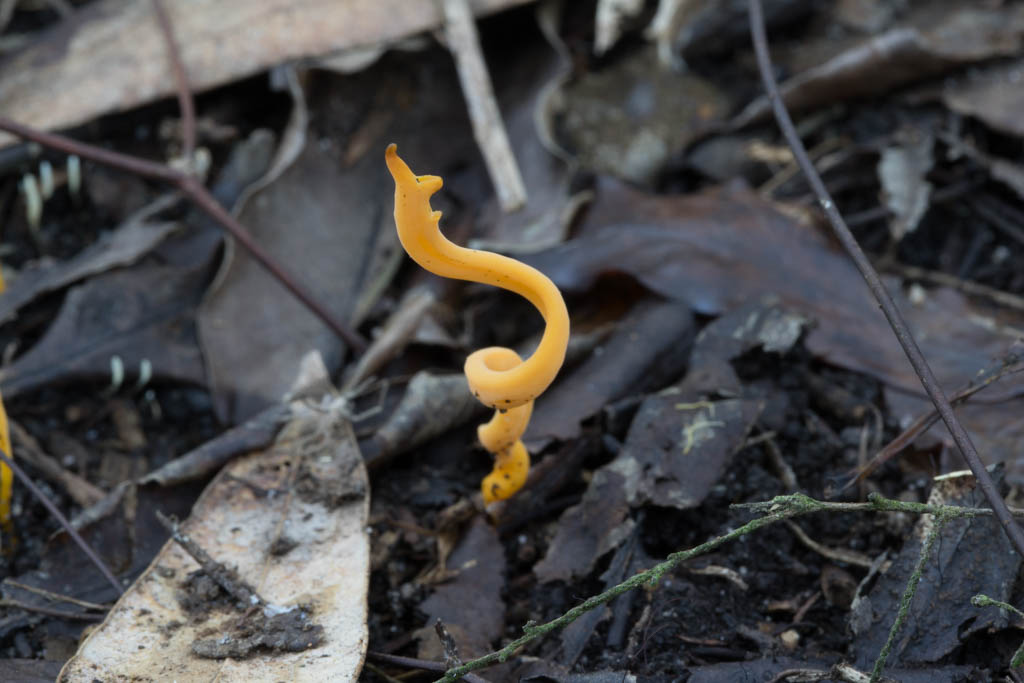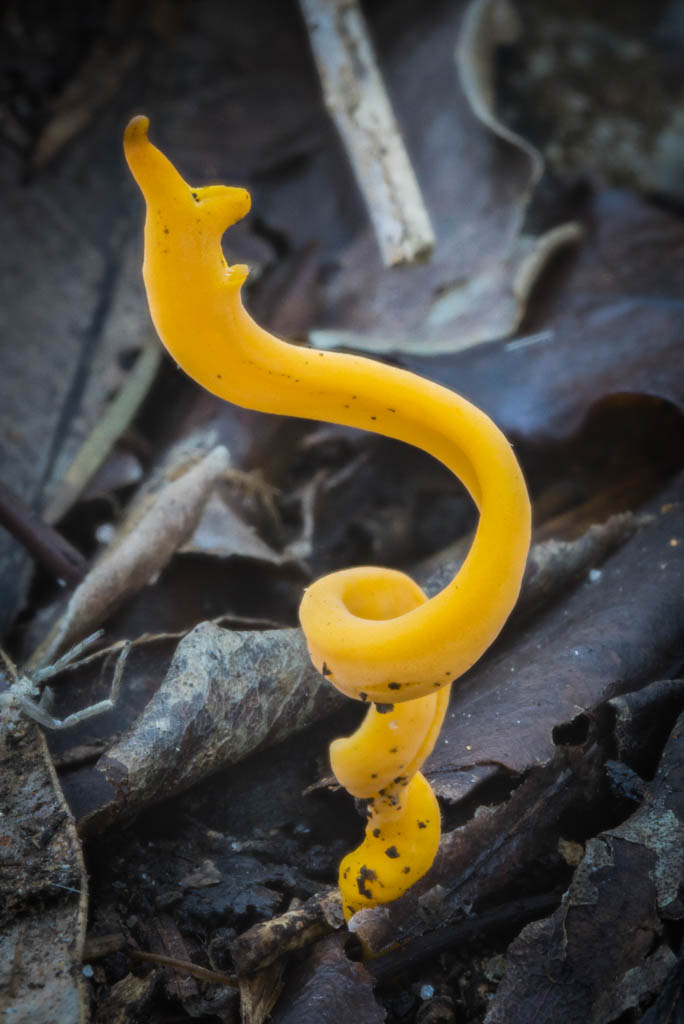Fungi Photography
All text and images © David Noble.
Increasing Depth of Field - Focus Stacking
Focus stacking is done during post processing.
A series of photographs are taken from the same point, with the
same settings except that the focus is varied between the shots.
The images are then combined using software to produce a composite
images formed from the most in focus section of each of the
individual photos.
It is usually necessary for the software to align the images as
well. This is done prior to the stacking.
Example - 3 images are combined and then cropped -

Image 1 - mid point in focus

Image 1 - top in focus

Image 1 - bottom in focus

Final image - focus stacked from the three images above, then normal
post processed - cropped, contrast increased slightly, and slight
vignetting added.
Focus Stacking Software -
Photoshop CS 5 and up
Helicon
Zerene Stacker
I have used both Photoshop and Zerene Stacker. I have found Zerene
Stacker generally produces a much better composite when used for
macro photography.
Notes -
I usually manually choose different focus points and take a photo at
those points. The number of photos can vary. If you want to isolate
the background - then you usually use a large aperture like f 5.6
which provides a narrow depth of field. Then a large number of
images are needed with only slight variation in the focus points. If
you are taking a photo of a cluster of mushrooms then you may want
to take a separate photo with the focus point shifted to each
mushroom in the cluster. Taking too many photos does not matter.
Taking too few photos with an area out of focus between two areas in
focus can be a poor result. Typical numbers for photos I combine
range from 2 to about 7.
Rather than change the focus on the lens it is better, from a
technical point of view to actually move the camera and lens closer
or further away from the subject. Professionals do this for product
photography using a focussing rail.
Some cameras now have inbuilt settings that can automatically take a
set of photos with different focus points. This requires a lens that
can be driven by the camera - eg not a manual focus lens or a lens
switched to manual focus.
More examples

This tiny slime mould has benefited by focus stacking to ensure all
the image is sharp

No focus stacking was used here. A small aperture of f 22 provides
sufficient depth of field that all the subject is sharp - but the
background is harsh and distracts.

This is the same subject - taken with a series of photos and then
focus stacked. The background is a lot better.

This is a combination of several images so the whole fungus is in
focus and the background is out of focus
Return to main page







